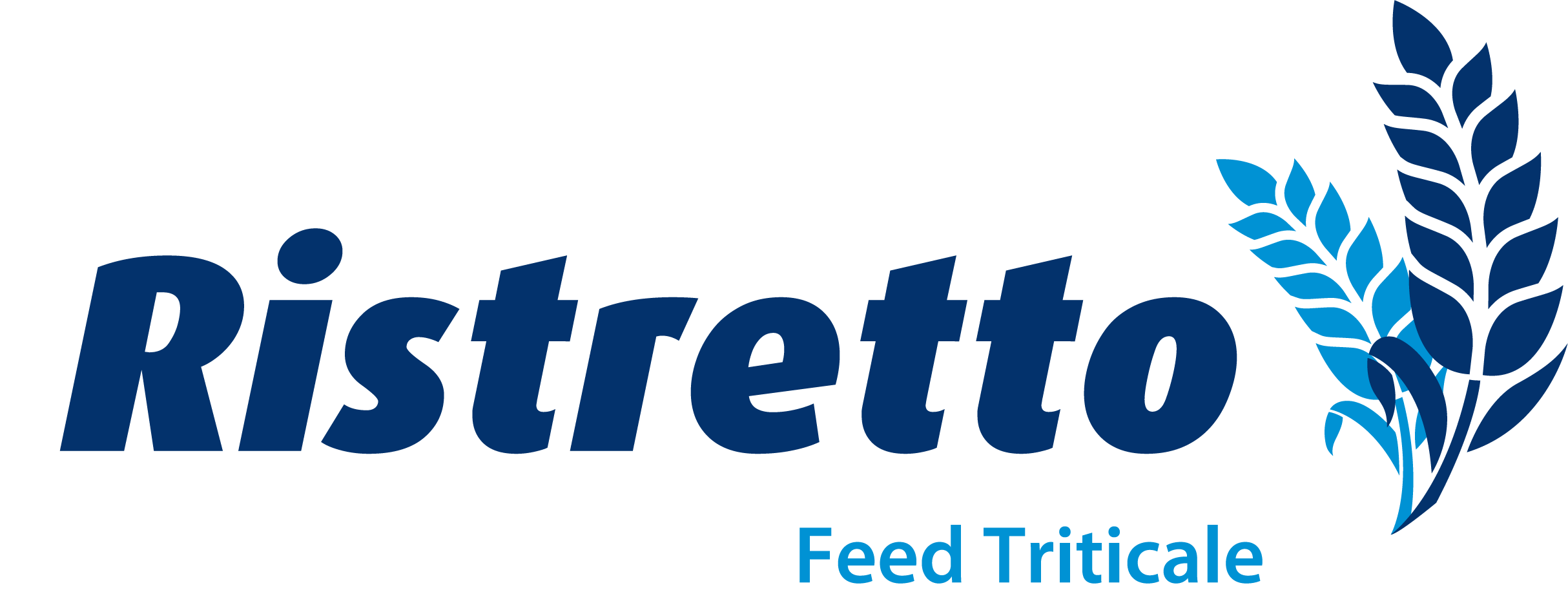Ristretto Feed Triticale

- Very high yielding, slow maturing feed triticale
- Consistent second-year cereal performance due to excellent take-all tolerance
- Mid-tall variety with good standing power
- Market leading disease resistance for triticale
YIELD
In PGW Grain trials, RISTRETTO has consistently shown very high yields as a first and second-year cereal in irrigated trials. In 2023/24 and 2024/25 FAR second-year Cultivar Performance Trial (CPT) wheat trials RISTRETTO was the standout performer, averaging 11.7 t/ha and 12 t/ha versus wheat ranging 9.7 t/ha to 11.9 t/ha. It has also proven itself in PGW Grain spring sown trials for the past two seasons outperforming Cochise.
GRAIN QUALITY
|
Autumn |
|---|---|
| Kernel weight (1000 seed weight) | 52 |
| Test Weight (kg/hl) | 71 |
| Protein content (%) (N% x 5.7) | 13.1 |
| Screenings (%) | 0.1 |
RISTRETTO is more susceptible to sprouting than wheat. Therefore, RISTRETTO should be prioritised over other cereals at harvest.
MARKET
TIME OF DRILLING
SPEED OF DEVELOPMENT
Month planted |
Typical heading dates for RISTRETTO in Canterbury |
| Mid May | Early-mid November |
| Mid June | Mid November |
| Mid July | Mid-late November |
| Mid August | Late November |
RISTRETTO is an early mid-season grain cultivar with intermediate maturity.
SEED RATE AND TILLERING CHARACTERISTICS
RISTRETTO tillers profusely, so seed rates need to be reduced especially, when sowing early. Please refer to the triticale seed rate guidelines provided by PGW Grain sowing rate guidelines. The 2023/24 PGW Grain sowing date and rate trial confirmed these guidelines to be optimum for RISTRETTO.
SOIL TYPE, ROTATION AND GEOGRAPHY
DISEASE RESISTANCE
RISTRETTO has a good disease resistance profile, being mostly resistant to foliar diseases, with the exception of seedling stripe rust. Considering this disease profile, RISTRETTO can be grown with a reduced fungicide programme as long as the crop is monitored regularly for disease changes, especially seedling stripe rust. In the 2023-2025 PGW Grain fungicide trial, RISTRETTO displayed an average yield response of 0.5-3.0 t/ha under low to moderate fungicide programmes. Please contact your local PGW Representative for site specific recommendations.
Disease |
PGW Grain disease nursery ratings
|
|---|---|
| Stripe rust | 6/8* |
| Leaf rust | 9 |
| Septoria leaf blotch | 9 |
| Powdery mildew | 9 |
Note: *6 seedling rating, 8 is resistance as an adult




